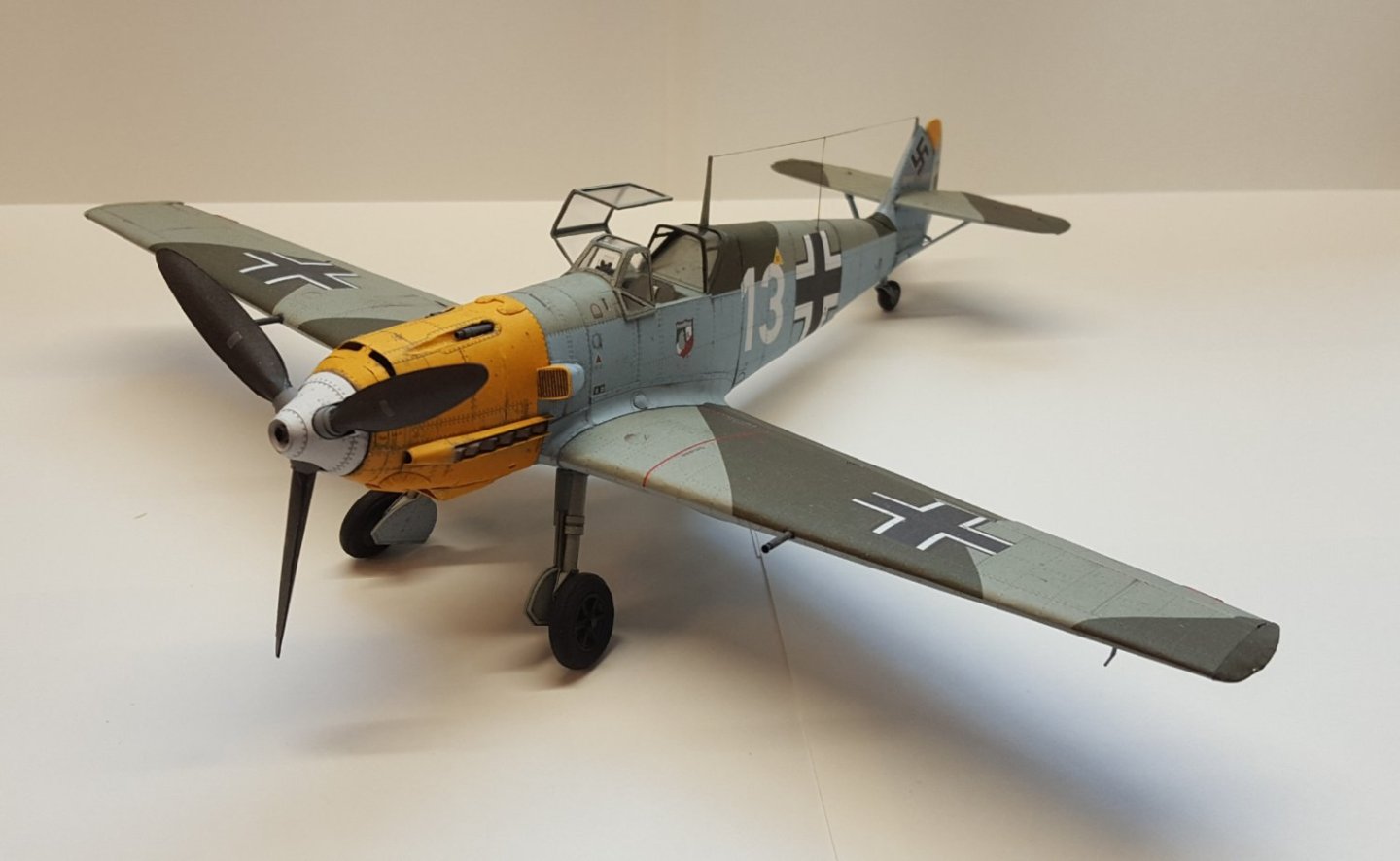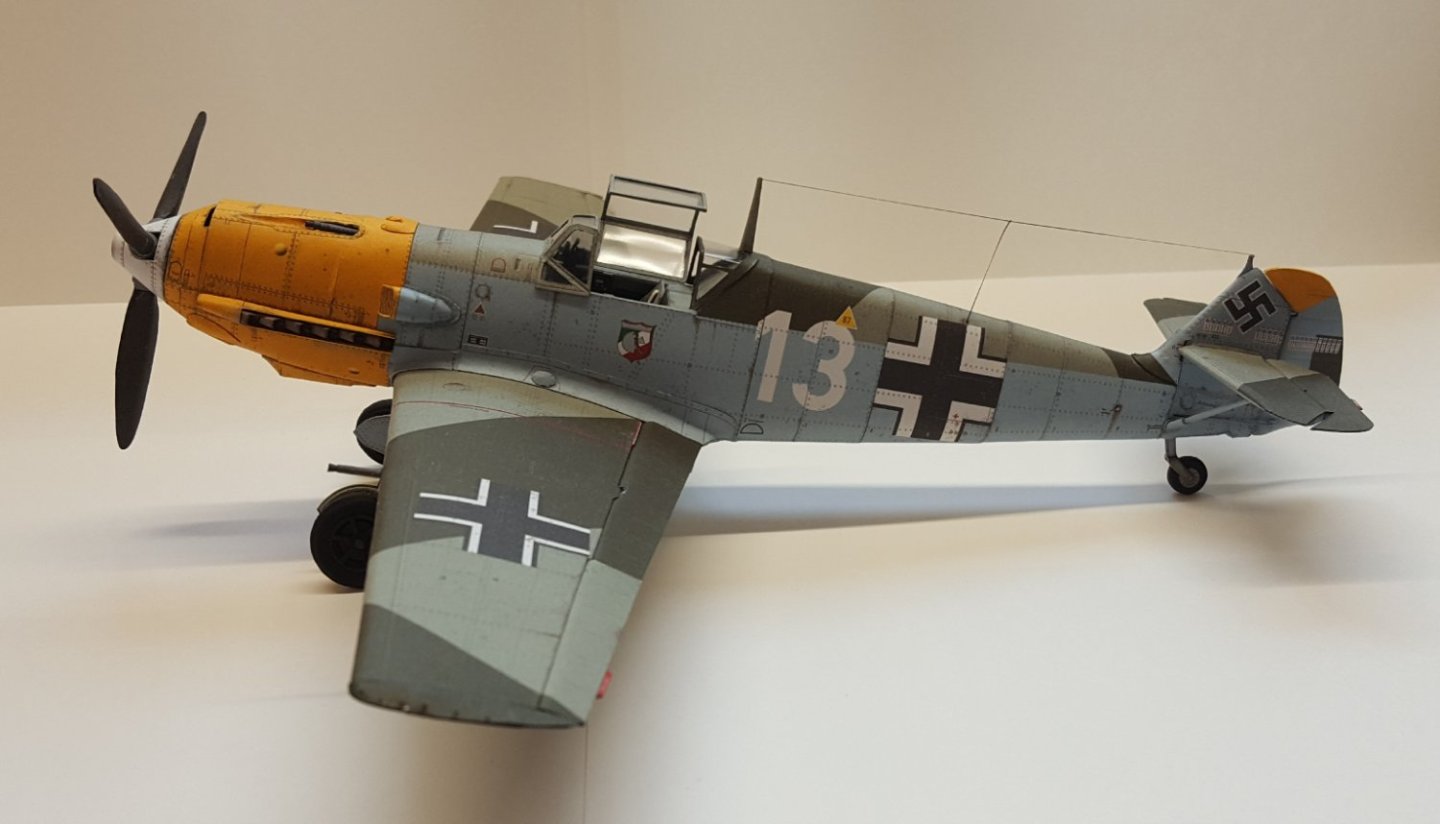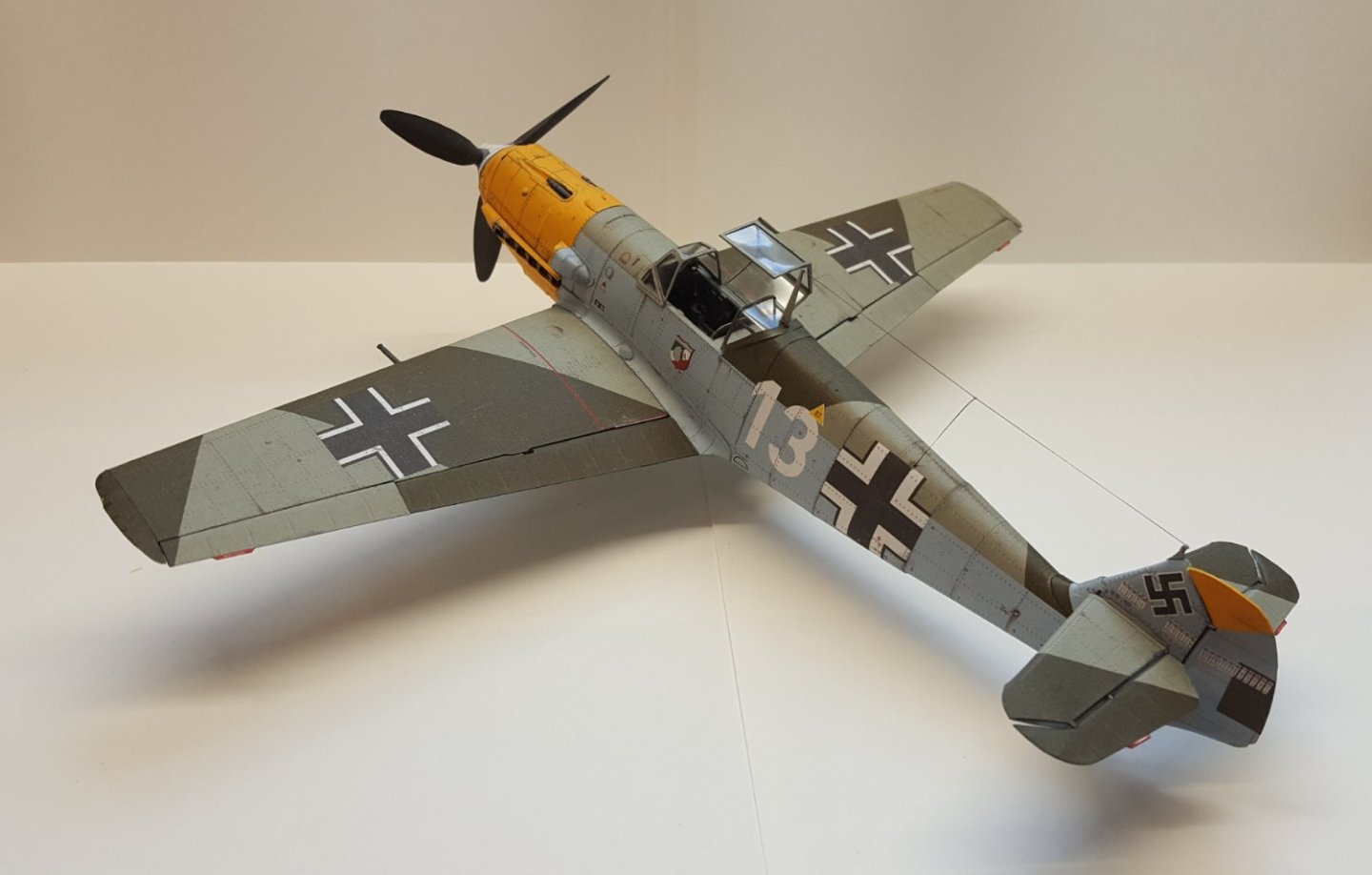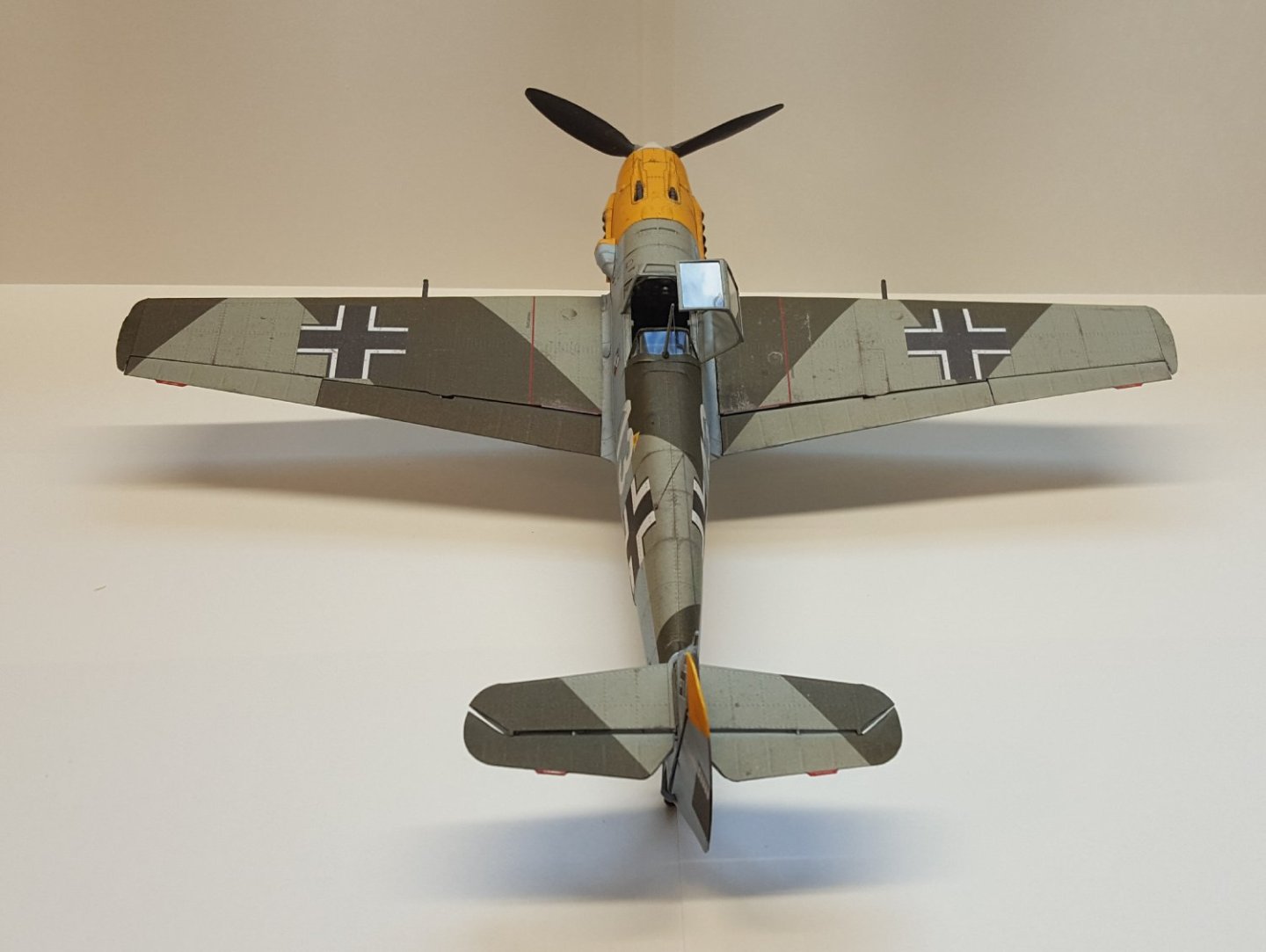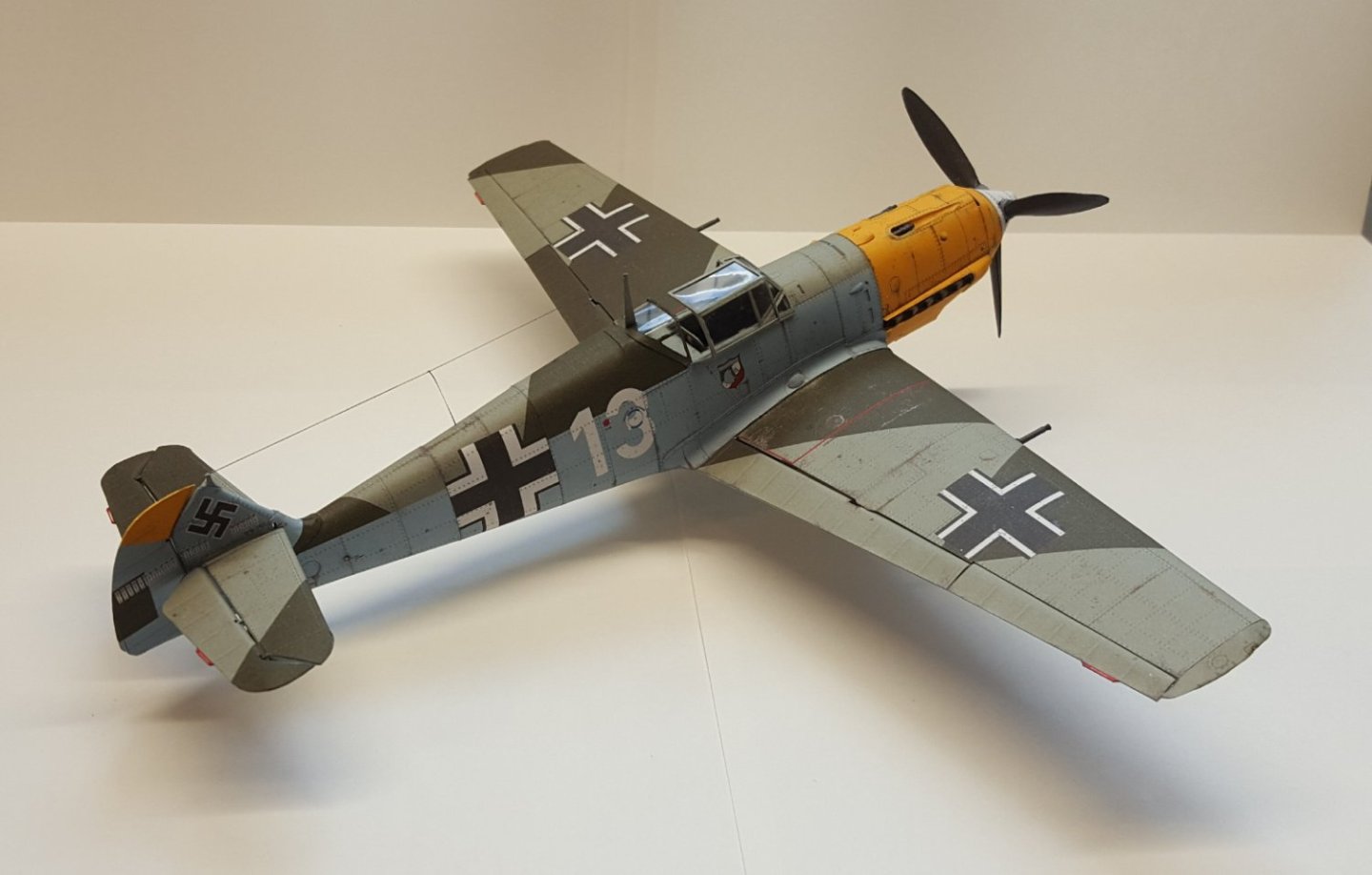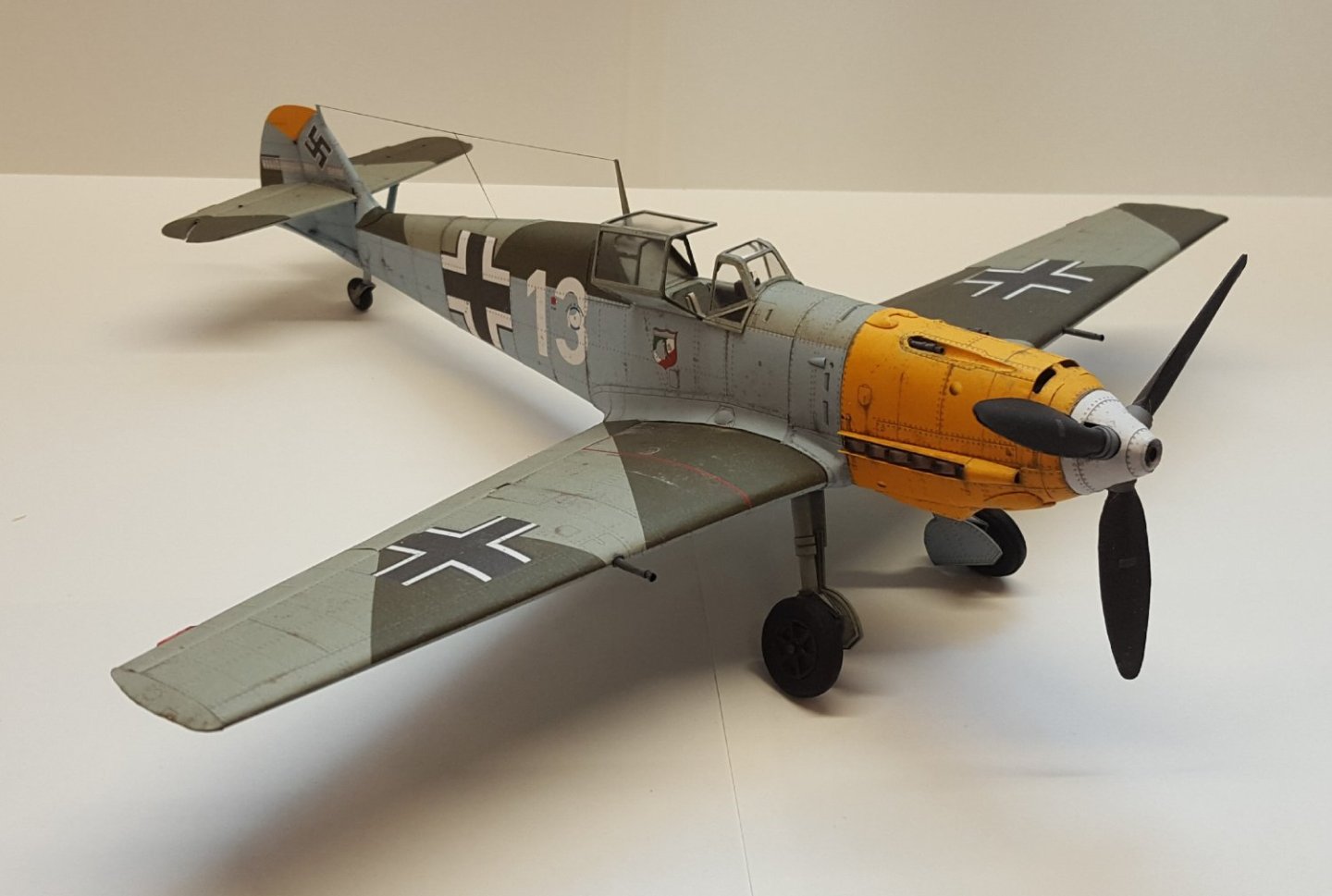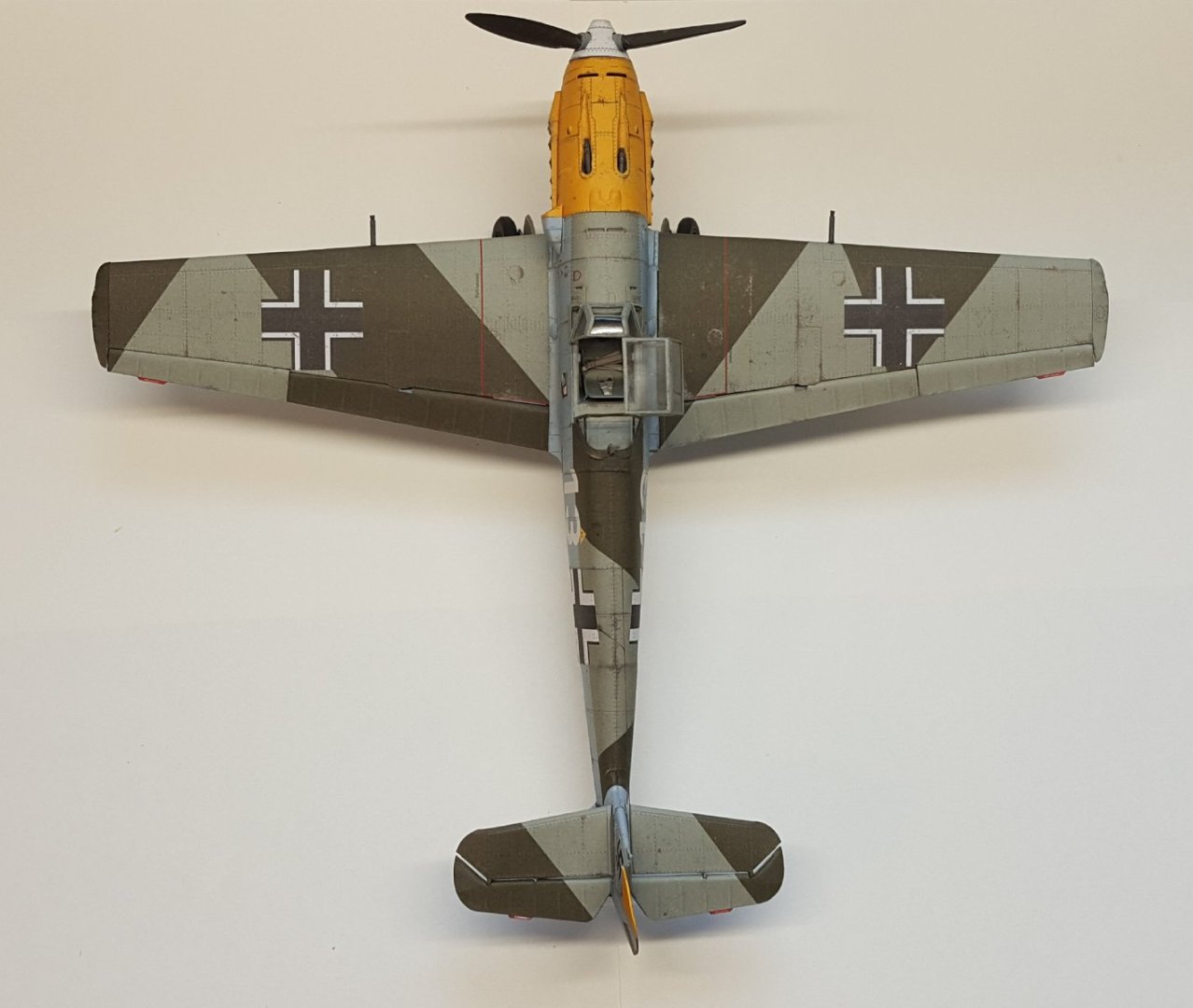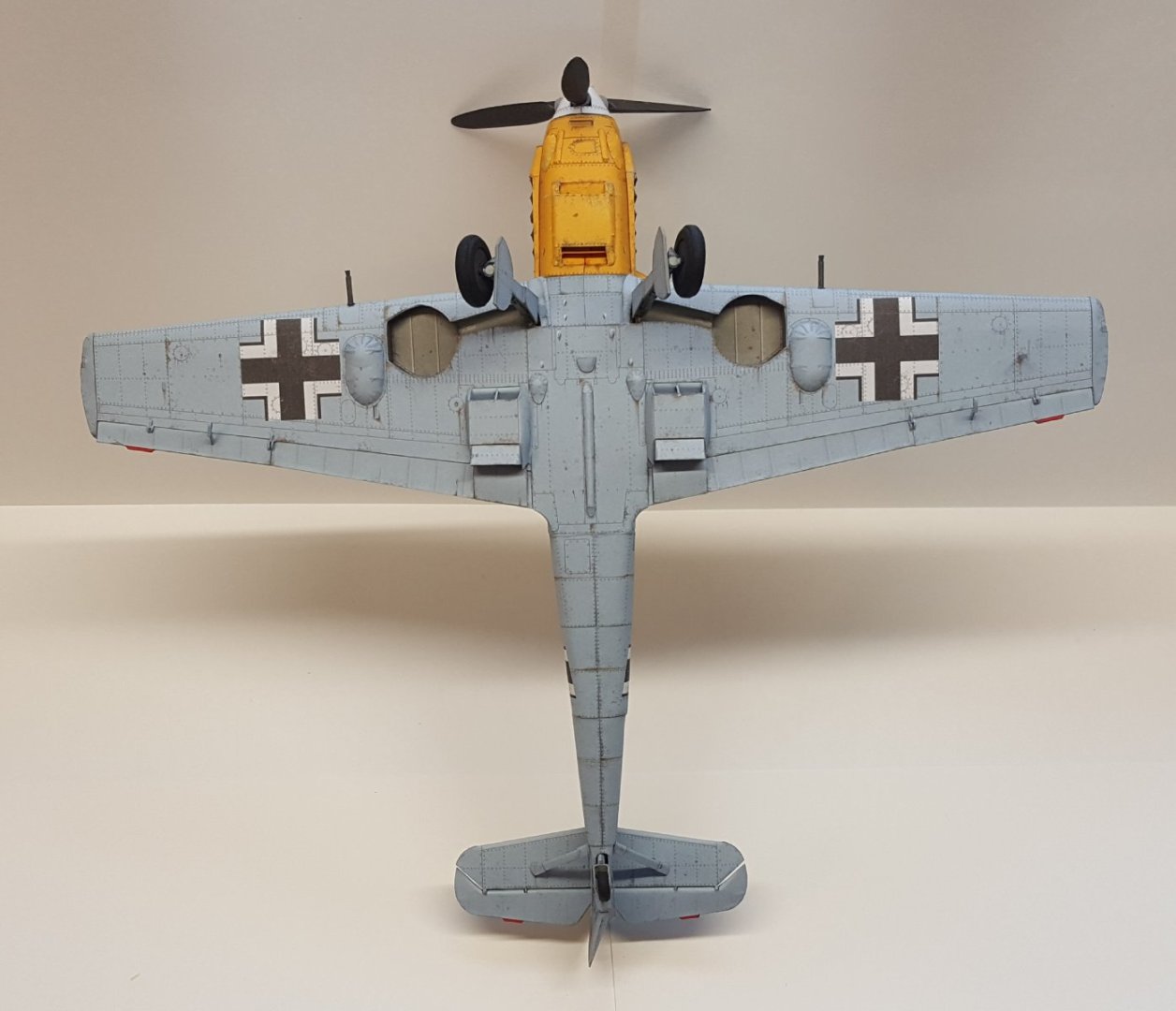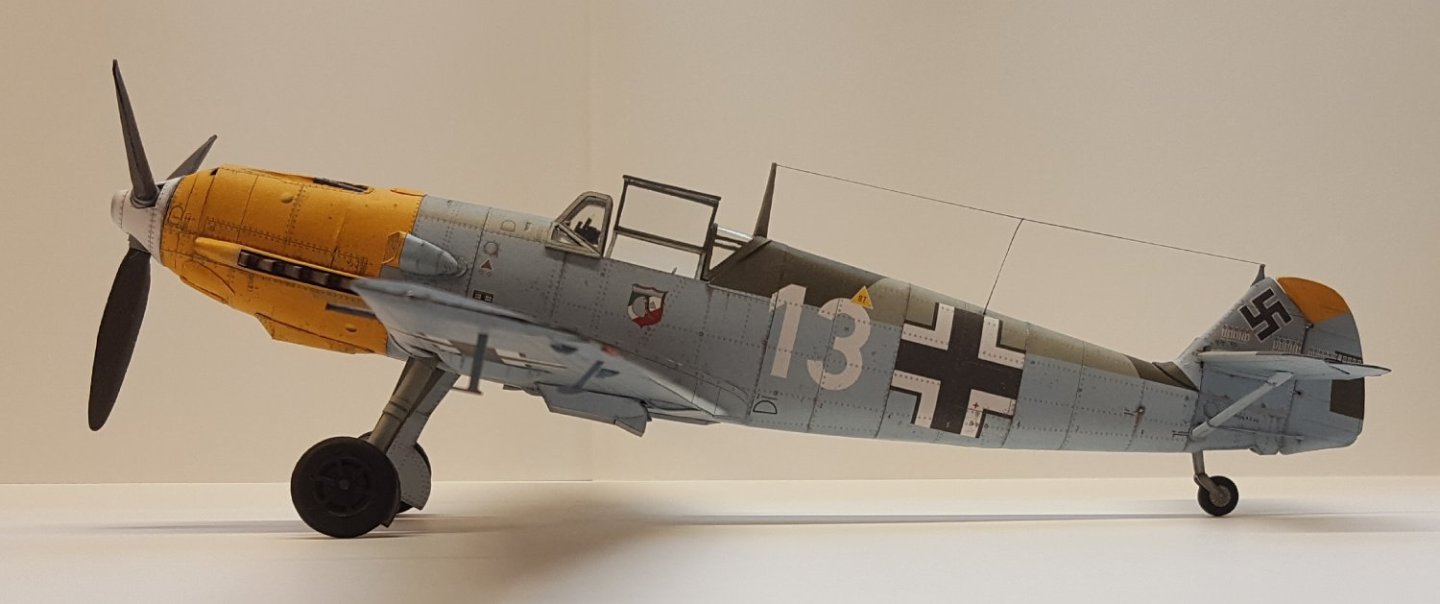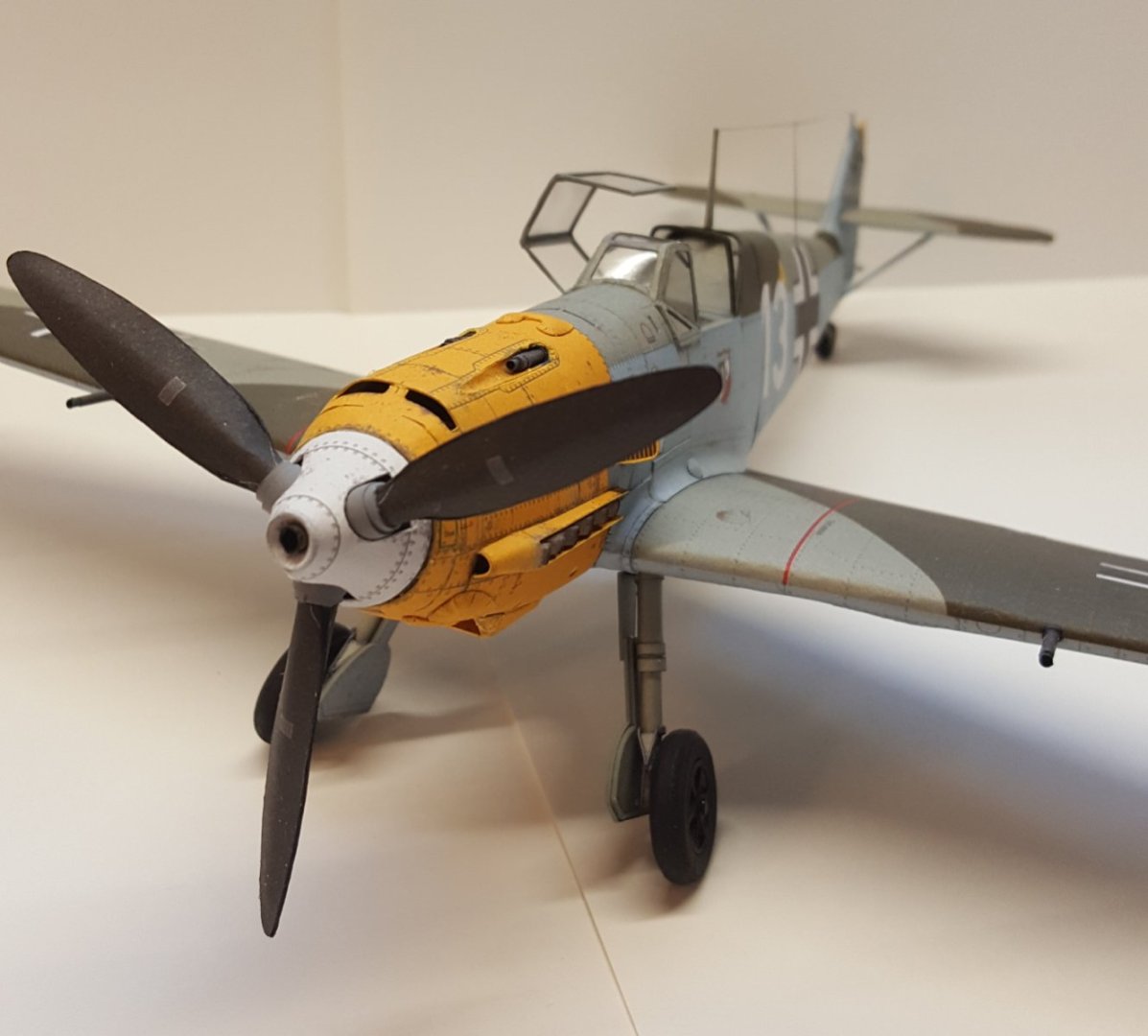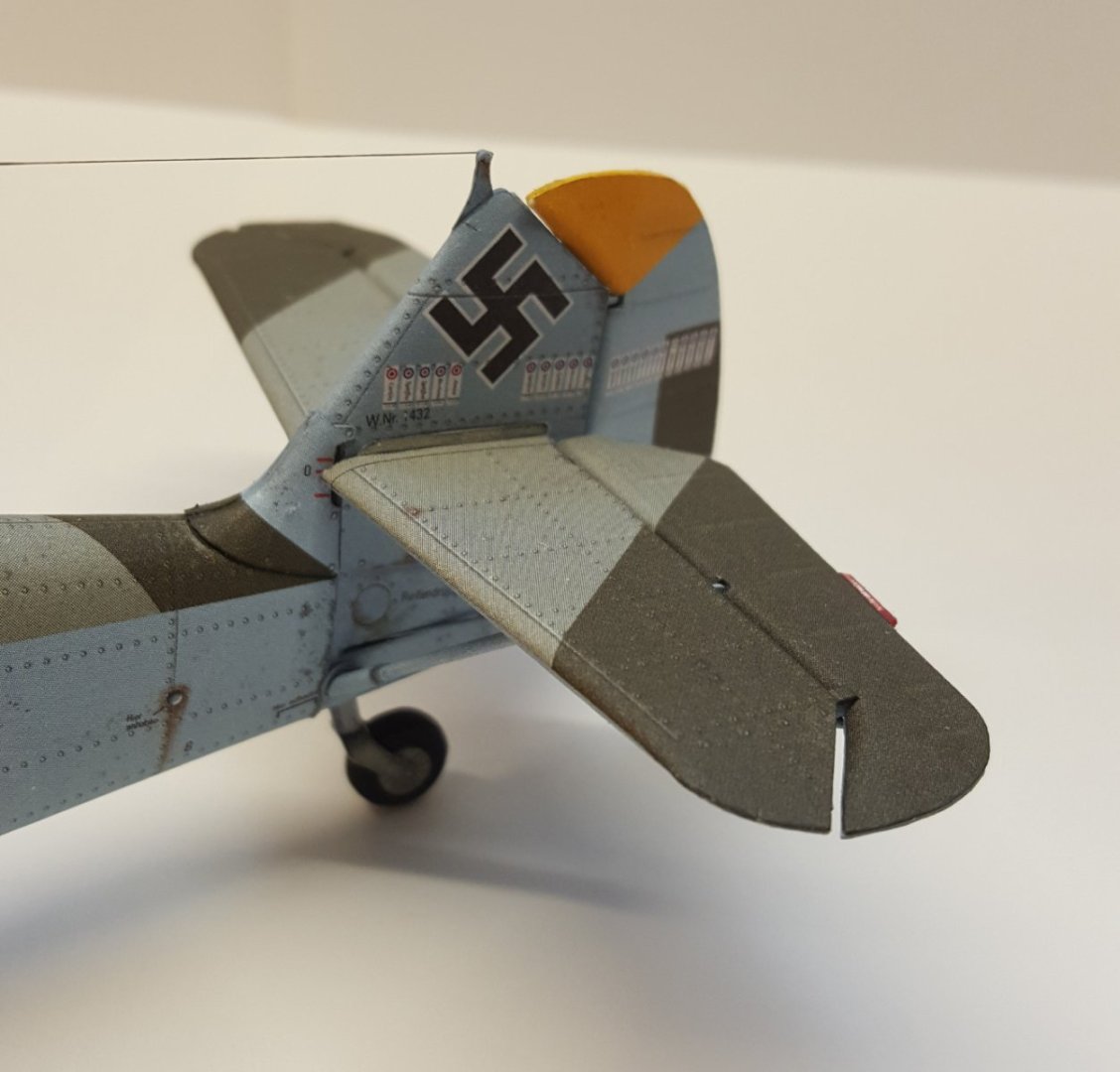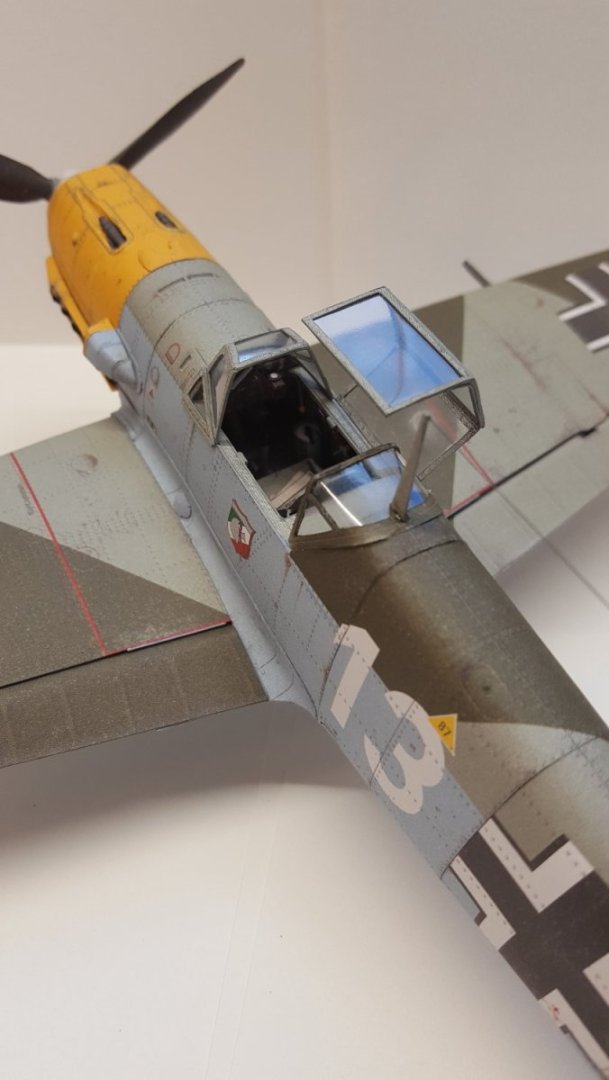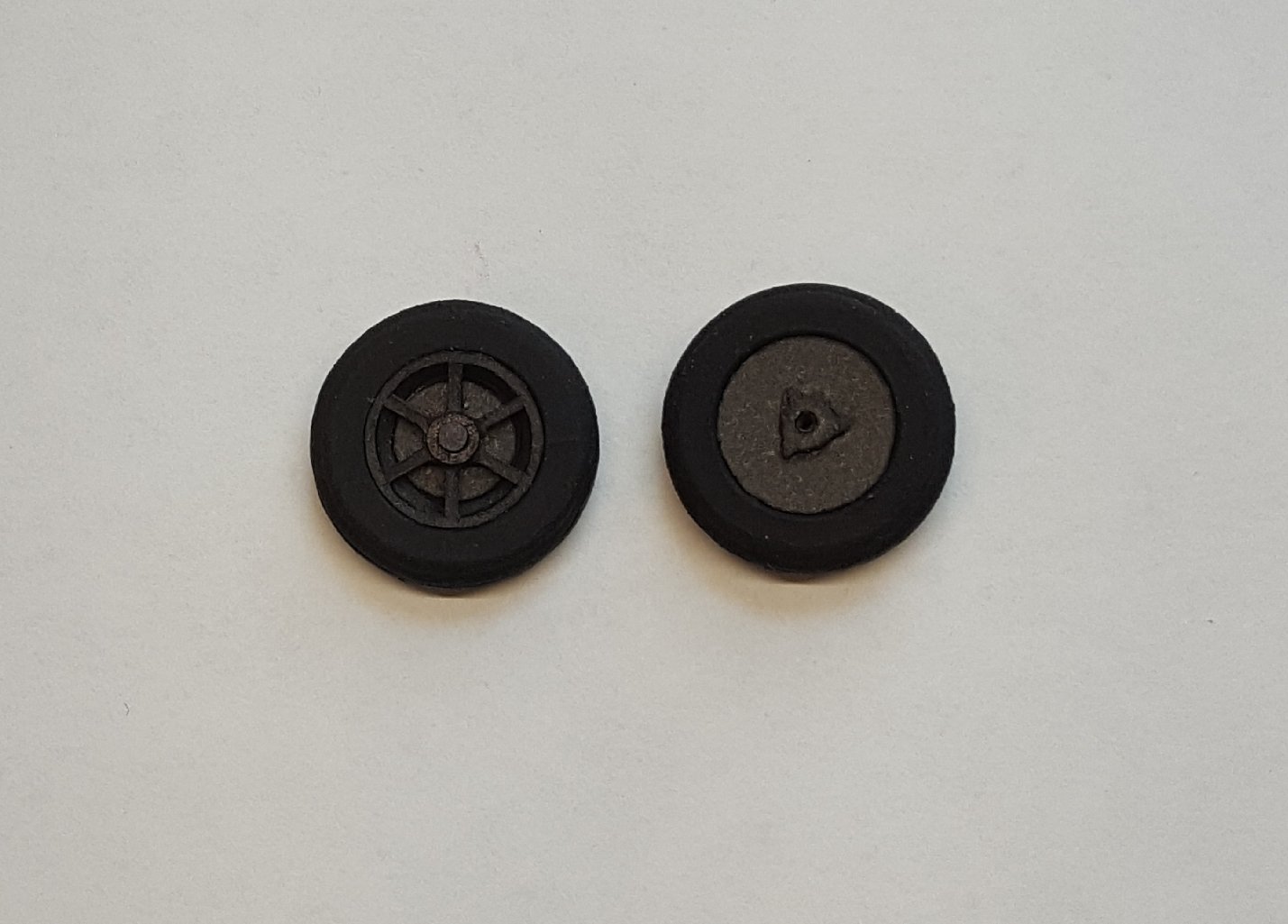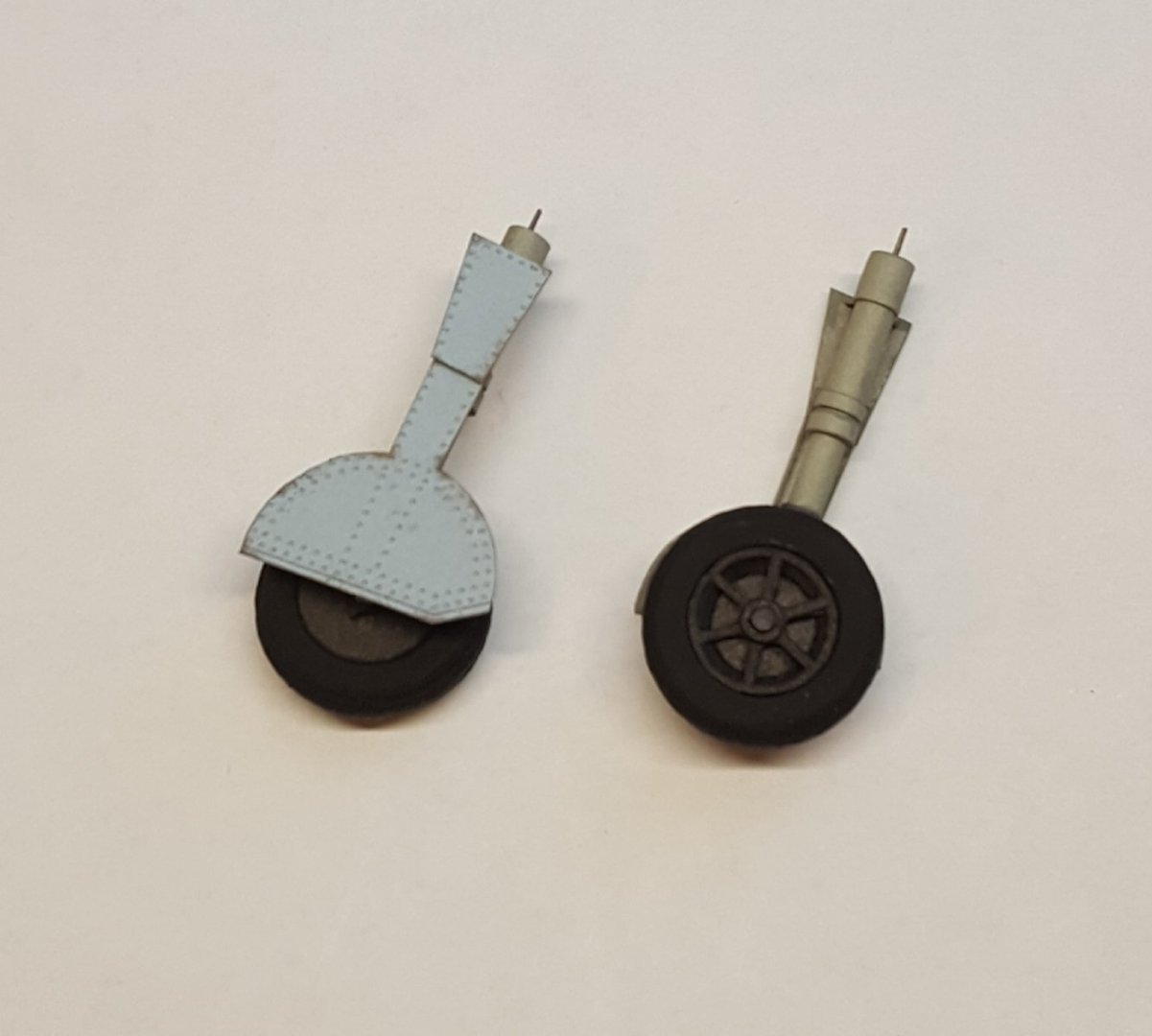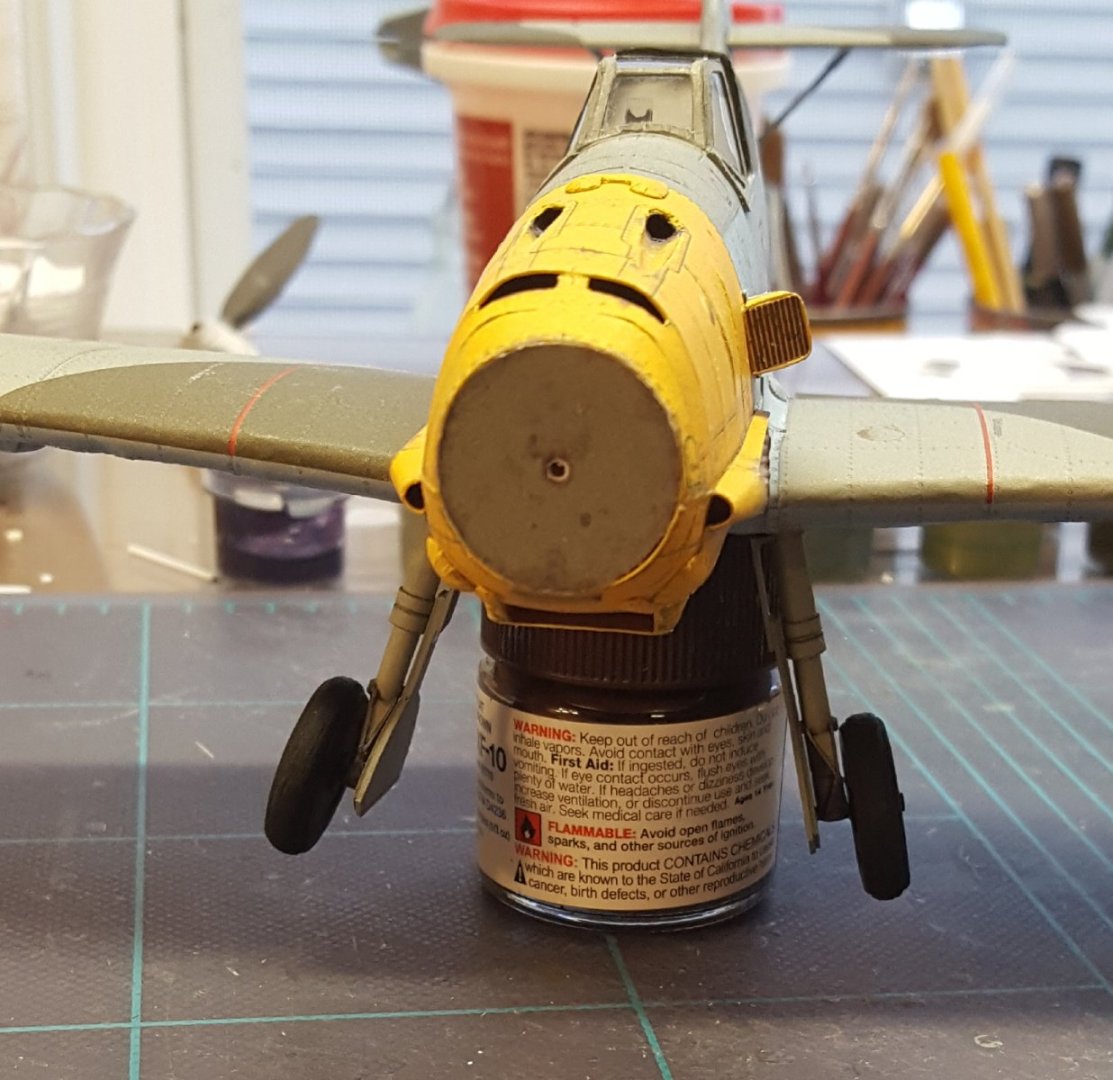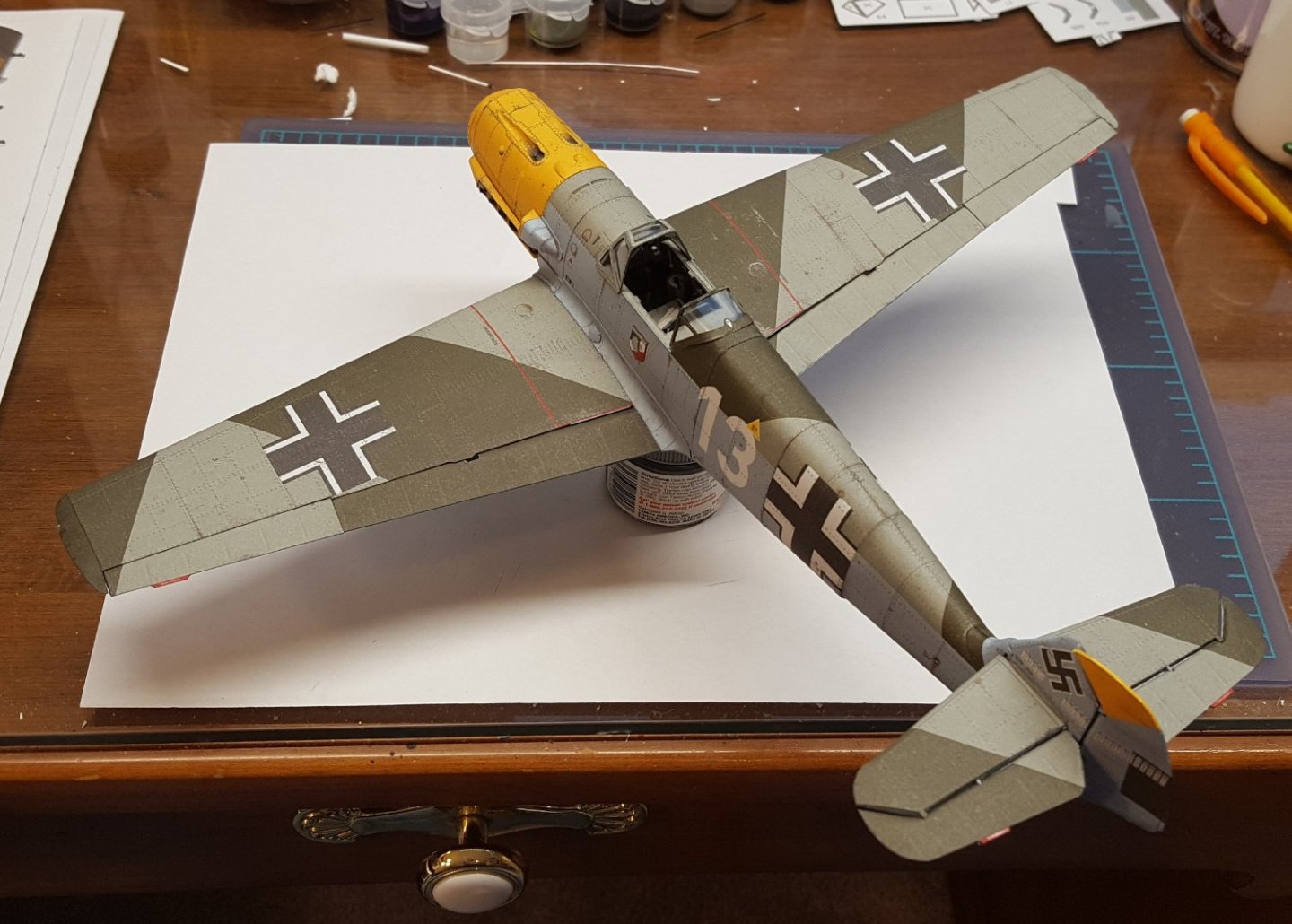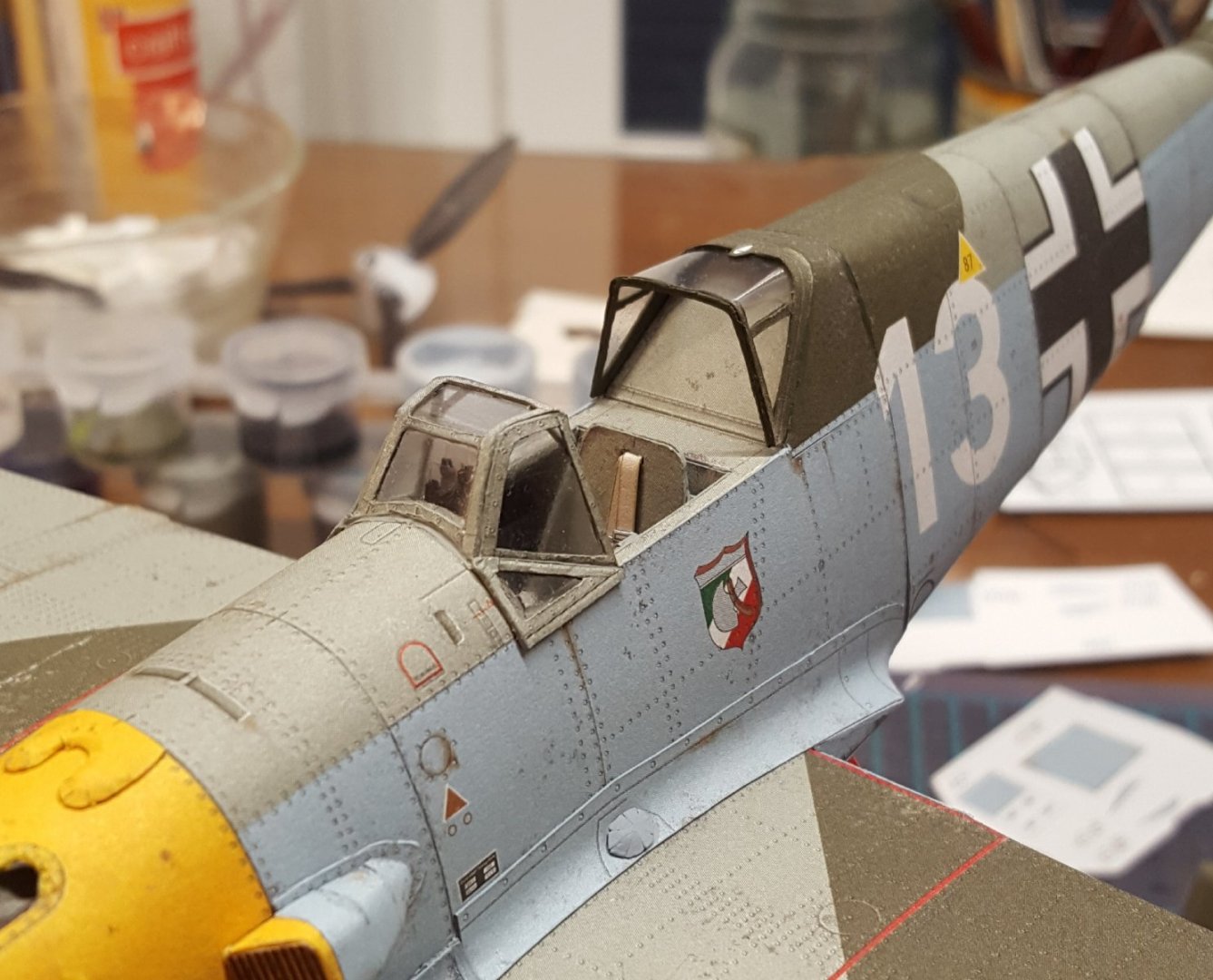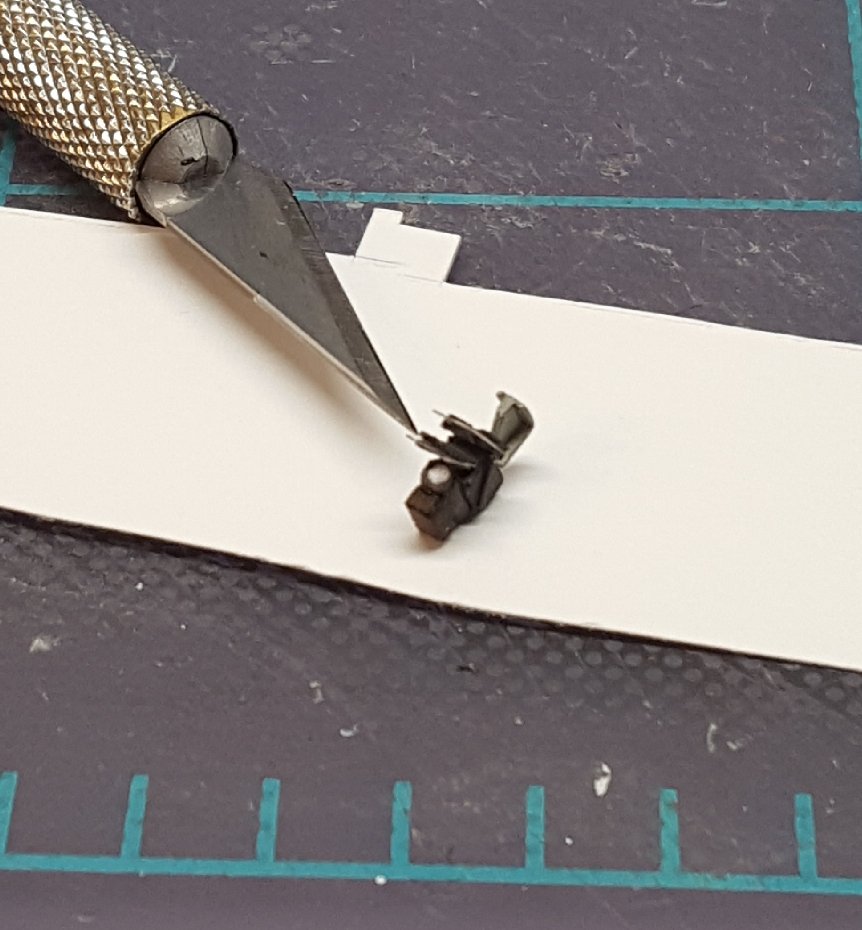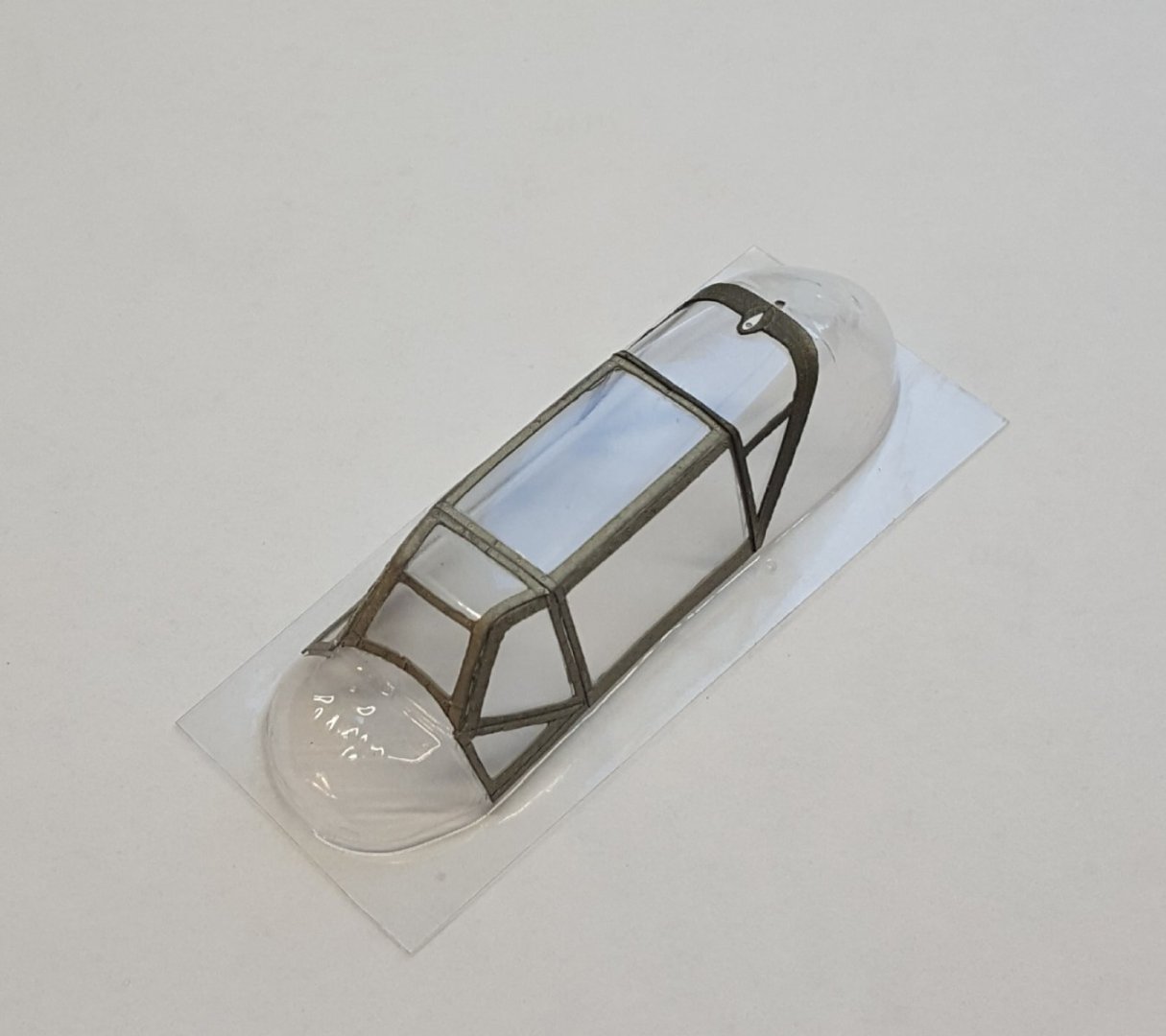-
Posts
10,545 -
Joined
-
Last visited
Content Type
Profiles
Forums
Gallery
Events
Everything posted by ccoyle
-

MRAP ATV by CDW - FINISHED - Rye Field - 1:35 Scale
ccoyle replied to CDW's topic in Non-ship/categorised builds
Very interesting piece -- well done! -
I think that it's safe to say that a model of a U-boot or other submarine, having a relative paucity of structure compared to a surface combatant, really depends on the painting and weathering skills of a modeler in order to bring it to life. This you have done in spades, Greg!
-
Yep, beneath the grating is definitely not correct, as the beam would largely block the open grate and thus defeat the purpose of placing a grate there in the first place.
- 82 replies
-
- Fly
- Victory Models
-
(and 2 more)
Tagged with:
-
The Big Reveal! So, one day shy of two months from the beginning of construction on this project (though it felt like longer), the Bf-109E-4 is complete. The final bits of construction consisted of small parts that needed to wait until the final stage in order to avoid getting knocked off repeatedly: tail wheel, antenna masts, gun barrels, aileron counterweights, pitot tube, and canopy. All in all, a challenging project without too many issues, though I did find some post facto construction errors and did wind up with a few tiny "mystery parts" left over. Enjoy the pictures!
-
So, I recently decided to suffer the injustice of high postage costs from Poland and ordered a batch of kits. The VERY NEXT DAY I learned that Kartonowa Kolekcja, my favorite publisher, just published a new kit. It's a Nieuport 16c.1, complete with Le Prieur rockets. The Nieuport 16 was an updated Nieuport 11, so this kit amounts to a repaint and slight modification of the older release. I was hoping that the next kit might be a SPAD, Albatros, Swordfish, or Fokker DVII repaint, but no joy. Still, this kit is a nice addition to the KK catalog
-
Welcome, Zac! I actually think a well-motivated beginner might be able to pull off the Endurance. Having no guns and being square-rigged on only one mast, it lacks some of the elements that can make a first build particularly difficult. The photo-based instructions should also be very helpful. Be sure to create a build log when you get started, and you should be able to get lots of advice along the way. Cheers!
-
Great! I'd be interested to see pictures of that kit when it arrives. The only photos I've seen of the printed parts were taken it what appeared to be poor lighting. I went ahead and pulled the trigger on the two Answer kits I spoke of earlier, the Nimrod and the Nieuport 28 -- they're both incredibly nice-looking biplanes -- I couldn't resist (don't tell the missus)! I also added a Stearman PT-17 Kaydet to the order and laser-cut frames for all three kits, plus resin wheels for the Nimrod and some frames for a Fiat G.50 Freccia I have in the stash (the desert camo on that kit matches the livery of my CR.42 Falco).
-
I'm sorry to see that -- your work looks great to that point. I hope it finds a good home!
-
The dollar is trading high versus the Polish zloty as well, which makes it a great time to order card models, but the shipping is where you really take it in the shorts. 😬
-
Very nice -- congratulations!
- 104 replies
-
- Bluejacket Shipcrafters
- smuggler
-
(and 1 more)
Tagged with:
-
Hello all you friends who model other things besides ships! You may have noticed that a number of topics in this section have been tagged with the word 'done'. Yes, that tag means exactly what you think it means -- it indicates a project that is finished. If you wish to see a list of all the finished projects in this sub-forum, simply click one of the 'done' tags and they will come up in a list (all 316 of them as of this writing). A reminder: Why have we used the word 'done' in this section and not 'finished' like everywhere else? Because MSW is first of all a ship modeling forum, and we want people who click a 'finished' tag, hoping to see only ship models, to in fact see only ship models. We will reserve 'done' for non-categorized builds, thus keeping the two groups -- ships versus everything else -- separate. You can add the tag 'done' to your completed projects or have me tag them for you. As always, I will be watching out for your 'done' projects, but some folks are less effective than others about alerting members to the fact that their done projects are indeed done. Another reminder: Other than indicating projects as 'done', we DO NOT use any other tags in this sub-forum! I had to expunge a few recently. Again, this is so that ship modelers don't get non-ship results in their searches. So, got that? Clicking a 'finished' tag will return ONLY finished ship models. Clicking a 'done' tag will return ONLY finished non-ship projects. Thanks and enjoy!
-
Hi, Steven. I'm the guy who wrote the "Cautionary Tale" post. I have seen beginners take on very difficult models as first projects and complete them, but one of the things that I pointed out in my article is that such accomplishments are quite rare. Based on my many years of moderating this forum, I don't think that it's a stretch to say that about 90% of beginners who attempt large men-of-war like Victory eventually give up on the attempt. To back up my assertion, I invite you to check out this link, which lists all of the build logs for HMS Victory on our site that include the words "first build" in their titles. As you will see, the one thing that all of those build logs have in common is that not a single one of them is tagged as being finished, even if a few of them did reach advanced stages of construction. So, the cautionary is exactly that -- a cautionary tale. No one is saying that you can't attempt Victory on the first go at this hobby, but if you were to complete it, it would be an extraordinary feat. Kind regards,
-
Next we move on to the canopy. I do things a little differently than called for in the diagrams. First, I tend to not use the internal framing, for a couple of reasons. The 'glass' of the molded canopy is not the correct scale thickness, and adding two layers of framing seems to make that fact more noticeable, at least to my eye. Also, I find it nearly impossible to get the internal and external frames to align correctly. To disguise the fact that I'm only using the outer layer, I paint the back of the frames with the correct internal color; when seen through the canopy, it is difficult to see that the internal frames are not used. Second, the canopy framing comes in three pieces. I find it much, much easier to work with the parts after cutting the framing into smaller sections -- seven in this instance. The framing is glued with canopy glue. I'm getting better at this process, but I still had a few minor smears to clean up. Here is the canopy with its framing: I did not notice until AFTER I had completed this work that I had got the main left- and right-side panels swapped. 😬 There is a very slight difference between them, which hopefully will not create a fit issue later. The canopy glue requires 24 hours to fully set, and I will give it the full cure time before cutting the canopy free of the surrounding plastic, otherwise the bending and flexing that inevitable occurs during that task tends to work the frames loose. Oh, almost forgot to mention that I plan to complete this model with the canopy closed, not because I wish to hide the cockpit detail, but because of the 109's odd distinction of having a hinged canopy that swings open to one side instead of sliding back on rails. Displaying the canopy open would inevitably create a part that just begs to get knocked loose. Cheers!
-
Добре дошли в нашия сайт! Моля, обърнете внимание, че това е форум само на английски език. Можете да използвате онлайн преводач, за да създадете вашите съобщения. С искрени поздрави, Chris
About us
Modelshipworld - Advancing Ship Modeling through Research
SSL Secured
Your security is important for us so this Website is SSL-Secured
NRG Mailing Address
Nautical Research Guild
237 South Lincoln Street
Westmont IL, 60559-1917
Model Ship World ® and the MSW logo are Registered Trademarks, and belong to the Nautical Research Guild (United States Patent and Trademark Office: No. 6,929,264 & No. 6,929,274, registered Dec. 20, 2022)
Helpful Links
About the NRG
If you enjoy building ship models that are historically accurate as well as beautiful, then The Nautical Research Guild (NRG) is just right for you.
The Guild is a non-profit educational organization whose mission is to “Advance Ship Modeling Through Research”. We provide support to our members in their efforts to raise the quality of their model ships.
The Nautical Research Guild has published our world-renowned quarterly magazine, The Nautical Research Journal, since 1955. The pages of the Journal are full of articles by accomplished ship modelers who show you how they create those exquisite details on their models, and by maritime historians who show you the correct details to build. The Journal is available in both print and digital editions. Go to the NRG web site (www.thenrg.org) to download a complimentary digital copy of the Journal. The NRG also publishes plan sets, books and compilations of back issues of the Journal and the former Ships in Scale and Model Ship Builder magazines.




